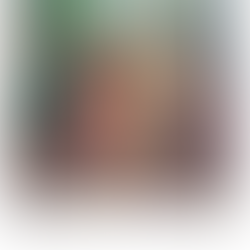Visual Language in Mental Health Art: Expression or Stereotype?
- chinwe Russell

- Jun 20
- 2 min read
Updated: Jun 21
The 2025 Art as a Response to Mental Health exhibition brings together powerful works from artists across the globe, with submissions spanning themes of anxiety, trauma, recovery, isolation, identity, and healing. Curated by Chinwe Russell for Doncaster Art Fair, the exhibition continues its mission to create space for expression, dialogue, and reflection around mental health.
A noticeable visual thread running through several artworks in this year’s showcase is the depiction of figures in curled or hunched positions, often clutching their heads or shielding their faces. These poses, seen in works like “Blue” by Barrie Jones, “Weight of the World” by Kristin Rawcliffe, and “Trapped Inside” by Clay Robinette, are instantly recognisable and often associated with distress, overwhelm, or mental anguish.
Such visual motifs have long featured in artistic responses to mental health and emotional struggle. Their presence in this exhibition speaks to the raw honesty with which many artists approach the subject, using body language and symbolism as tools to communicate intense, personal experiences. These images often convey feelings that are difficult to articulate in words, allowing viewers a glimpse into the inner emotional world of the creator.
However, over the years, there has been ongoing discussion in the wider arts and mental health communities around how mental health is visually represented. Critics have raised questions about whether repeated imagery—such as people holding their heads in their hands—risks reinforcing limited or clichéd narratives around mental illness. Concerns have been voiced about whether such imagery simplifies the breadth and diversity of mental health experiences, or perpetuates stigma by focusing predominantly on suffering.
At the same time, many advocates and artists push back on the notion that these motifs are inherently reductive. They argue that if such postures authentically reflect what an artist has felt, witnessed, or lived through, then they remain valid forms of creative expression. For some, these images are not stereotypes but rather accurate representations of deeply personal emotional states.
The discussion invites us to consider the complex role of visual language in mental health storytelling. Art is both deeply subjective and culturally shaped. What feels overused to one viewer may feel profoundly resonant to another. There is no single way to represent mental health—nor should there be.
What the Art as a Response to Mental Health exhibition demonstrates is that the conversation is ongoing. It highlights the importance of holding space for a variety of visual interpretations—some familiar, some unexpected—and recognising the value in both. This year's entries are not only reflective of personal journeys but also contribute to a broader cultural archive of how mental health is perceived, lived, and communicated across time and geography.
Ultimately, this exhibition invites viewers to reflect not only on the artworks themselves but also on their own responses to them. Why do certain images move us, make us uncomfortable, or feel familiar? These responses are part of the dialogue—and part of the power of art.























As the author of one of these works, I feel strongly that my response was authentic. I was responding to the experience of dealing with the mental health of someone close to me, although I have had my fair share of personal experience of depression. I think that the perspective of the person affected is very different. The subject of my painting said himself that this is not how 'he' felt, but how I felt in reaction. As an artist, I paint my experiences of what and how I experience life and this was authentic for me, as I felt unable to reach him, and I could not personally fully understand the pain which had brought him to that place.…
Rather than "stereotype," I see these gestures and facial expression of the unspeakable feelings of emotional pain as cliches. The problem for art, and the difficulty for the artist, is to imagine, and actively depict the next moments. In the work of mental health, we realize that emotional states like everything else are not permanent. To be able to consider that there is a next moment crosses a threshold into realizations that are free from stereotypes about oneself. Not stopping... keep going... moment after moment after moment... Life.
As a 69year old person who has struggled with her mental health since the age of 10 years,my reaction is to accept but also question familiar representations of the body in anguish.Not all experiences of mental distress are externally identifiable.Nor is the depth of suffering so simplistically quantifiable. My concern is that using imagery which has become visual shorthand diminishes understanding of the complex range of emotions which punctuate differing states of mental ill health.Also that the emotional response elicited from a wider audience is unlikely to generate any accurate level of understanding.I'd appreciate more artists being displayed who are developing multimedia representations,perhaps in different stages of their developmental process,not necessarily in the completion stage.Within this particular curation it does…